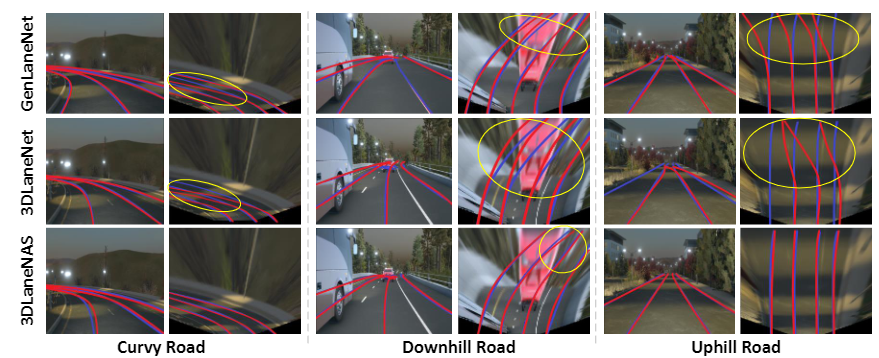3DLaneNAS: Neural Architecture Search for Accurate and Light-Weight 3D Lane Detection
Lane detection is one of the most fundamental tasks for autonomous driving. It plays a crucial role in the lateral control and the precise localization of autonomous vehicles. Monocular 3D lane detection methods provide state-of-the-art results for estimating the position of lanes in 3D world coordinates using only the information obtained from the front-view camera. Recent advances in Neural Architecture Search (NAS) facilitate automated optimization of various computer vision tasks. NAS can automatically optimize monocular 3D lane detection methods to enhance the extraction and combination of visual features, consequently reducing computation loads and increasing accuracy. This paper proposes 3DLaneNAS, a multi-objective method that enhances the accuracy of monocular 3D lane detection for both short- and long-distance scenarios while at the same time providing a fair amount of hardware acceleration. 3DLaneNAS utilizes a new multi-objective energy function to optimize the architecture of feature extraction and feature fusion modules simultaneously. Moreover, a transfer learning mechanism is used to improve the convergence of the search process. Experimental results reveal that 3DLaneNAS yields a minimum of 5.2 % higher accuracy and 1.33 * lower latency over competing methods on the synthetic-3D-lanes dataset.
